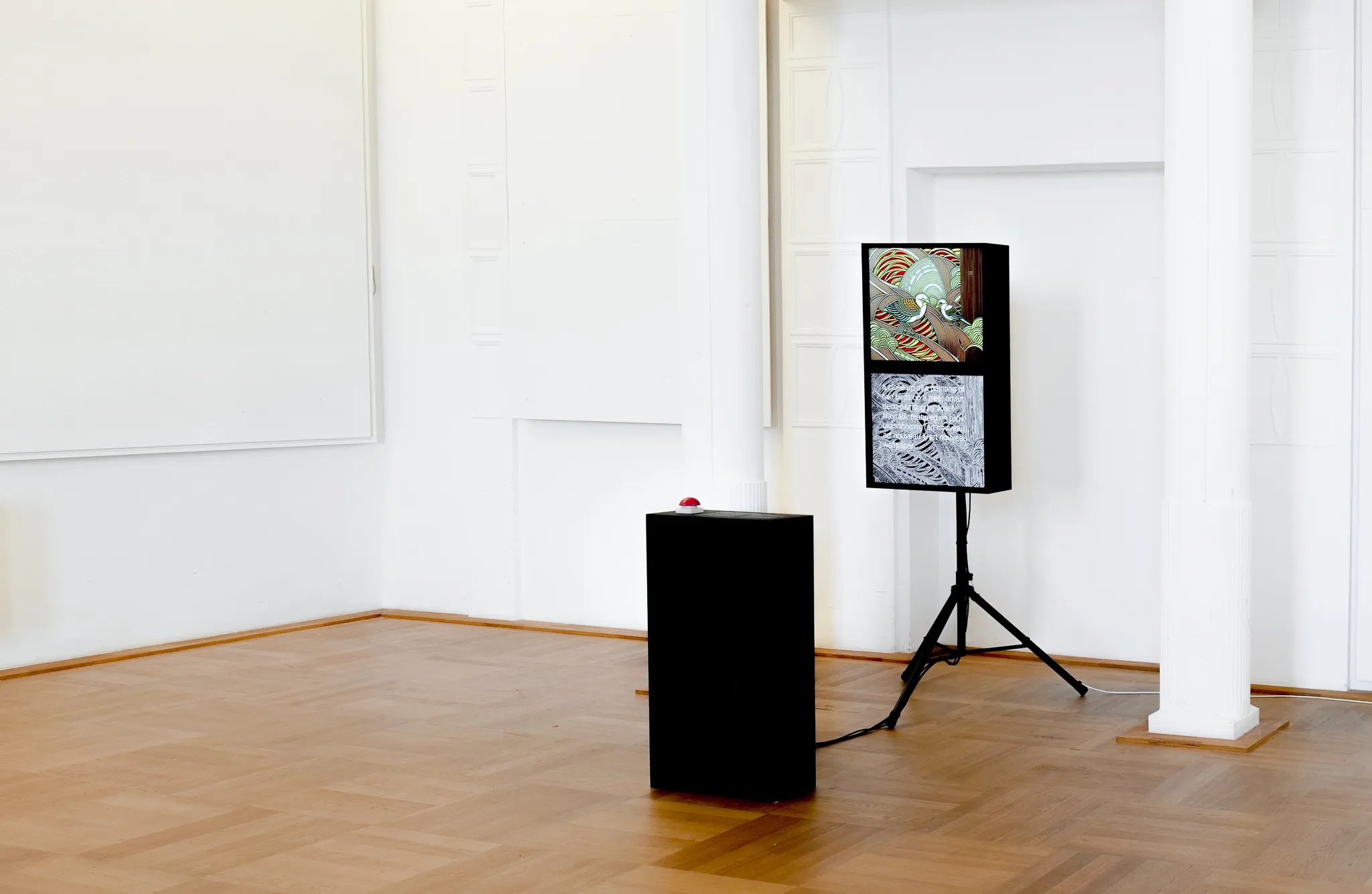unStable Mirror

In an era where artificial intelligence (AI) has permeated various facets of our lives, it becomes imperative to understand not just its capabilities, but also its limitations and inherent biases. Enter unStable Mirror, a cutting-edge mixed media installation that serves this very purpose. Developed with a keen eye on AI’s generative processes, this installation delves into the intriguing world of AI models, particularly focusing on the generative algorithms like Stable Diffusion.
unStable Mirror is an inventive installation that combines technology and art to provide a hands-on experience in understanding AI. The setup includes a custom-built display frame equipped with an integrated camera and an information panel with a buzzer button. At the heart of this installation lies an AI processing pipeline based on Stable Diffusion, a generative AI algorithm known for its ability to create detailed images from textual descriptions and edge maps.
Participants are invited to interact with the installation, which captures their image like a mirror when they press a red button. This image then undergoes a transformation process, starting with edge detection and textual description generation.
Upon capturing an image, the installation first extracts its edges using canny edge detection. Simultaneously, an image classification model (CLIP: ViT-L-14/openai) generates a textual description of the captured image. This dual input – the edge map and the textual description – is then fed into the Stable Diffusion model to generate a new image.

This is where unStable Mirror begins to unfold. The process doesn’t stop at just one iteration. Instead, it recursively feeds the AI-generated image back into Stable Diffusion. With each cycle, the original image undergoes a metamorphosis – contours are reinterpreted, shapes are reshaped, and new variations emerge. This recursive process is central to the installation’s explorative journey.
One of the core objectives of this installation is to illuminate the potential biases inherent in AI models. As the AI reinterprets the initial image over multiple iterations, any biases in the algorithm become amplified and more visible. This recursive nature allows participants to witness firsthand how AI models can deviate from neutrality and objectivity.

The installation thus serves as a mirror – albeit an unStable one – reflecting not just the physical image of the participant but also the underlying biases of the AI model. The project is more than just an art installation. It’s an educational tool, a conversation starter, and a mirror reflecting the current state of AI. By enabling participants to interactively explore the generative process of AI, it raises awareness about the technology’s capabilities and its limitations and can play a crucial role in educating and informing the public.
unStable Mirror stands at the intersection of art, technology, and education, providing a unique platform to explore the depths of AI. As participants engage with the installation, they gain a deeper understanding of AI’s potential and its biases, fostering a more informed dialogue about the role of AI in our lives. This installation not only showcases the power of generative algorithms but also underscores the importance of critically examining the tools we create and use. Through its interactive and recursive nature, unStable Mirror offers a reflective journey into the heart of AI, making the invisible visible and the complex comprehensible.
unStable Mirror is an outcome of my AI+D Lab residency at the HfG Schwäbisch Gmünd.
Credits
- Resident Artist: Christopher Pietsch
- Programming and AI Pipeline: Christopher Pietsch
- Hardware Product Design: Felix Sewing
- Extended Team: Aeneas Stankowski, Alexa Steinbrück, Rahel Flechtner, Felix Sewing, Benedikt Groß
- Video and Photo Documentation: Katharina Neugart